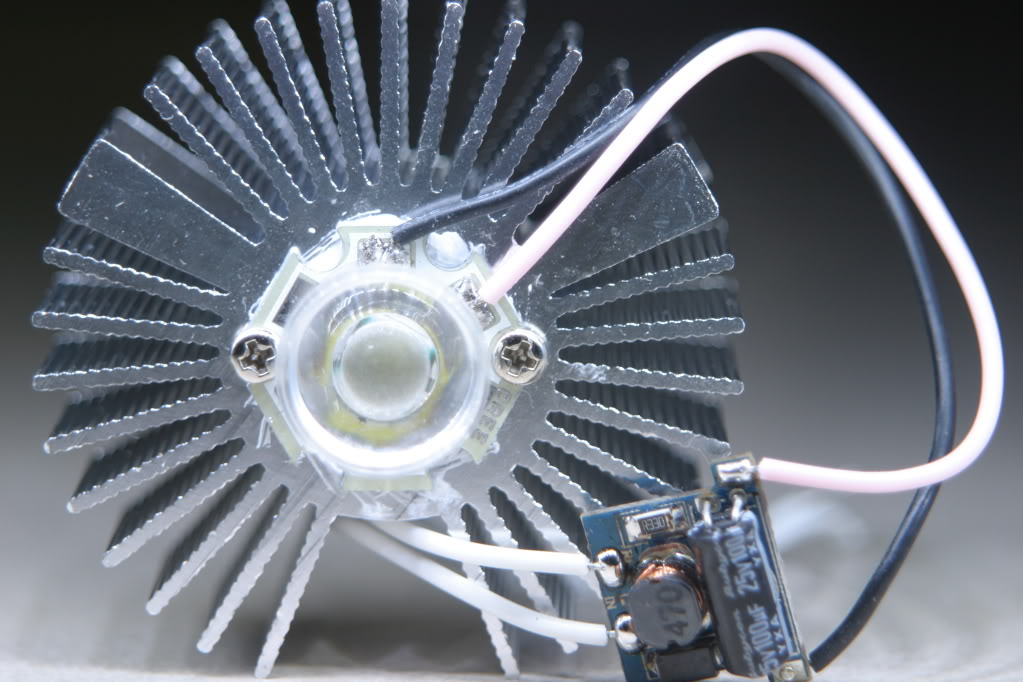A single LED or a string of LEDs can be driven using a driver module or a simple current limiting resistor. I've always used resistors.
Drivers can usually acheive a bit more efficiency and can handle advanced functionality such as dimming or accomodating varying input voltage. However, if all you want to do is drive a few LEDs at a single brightness level, a simple dropping resistor will do the job. You need to know a few things:
1. Power Supply Voltage
2. Number of LEDs
3. Forward voltage of one LED
4. Forward current of one LED.
To power a string of LEDs in series, all LEDs should have the same forward voltage and current specification.
The sum of all forward voltages (or the forward voltage of one LED multiplied by the number of LEDs) must be added together. Current does NOT.
So, say you have:
1. 12v
2. 3 LEDs
3. 3.6v
4. 750ma
To calculate a dropping resistor, use this formula:
R = (Source Volts - Forward Volts) / Forward Current
Current must be specified in amps (1 amp = 1000ma). R will solve in ohms.
So, 3 LEDs @ 3.6 Forward Volts = 10.8v
R = (12 - 10.8) / .750
R = 1.2 / .750
R = 1.6 Ohms
I'd use a 5w wirewound power resistor for this purpose.
BTW... your wiring diagram above doesn't look right. It looks like your potentiometer will short out your power supply and do nothing but generate lots of smoke.





